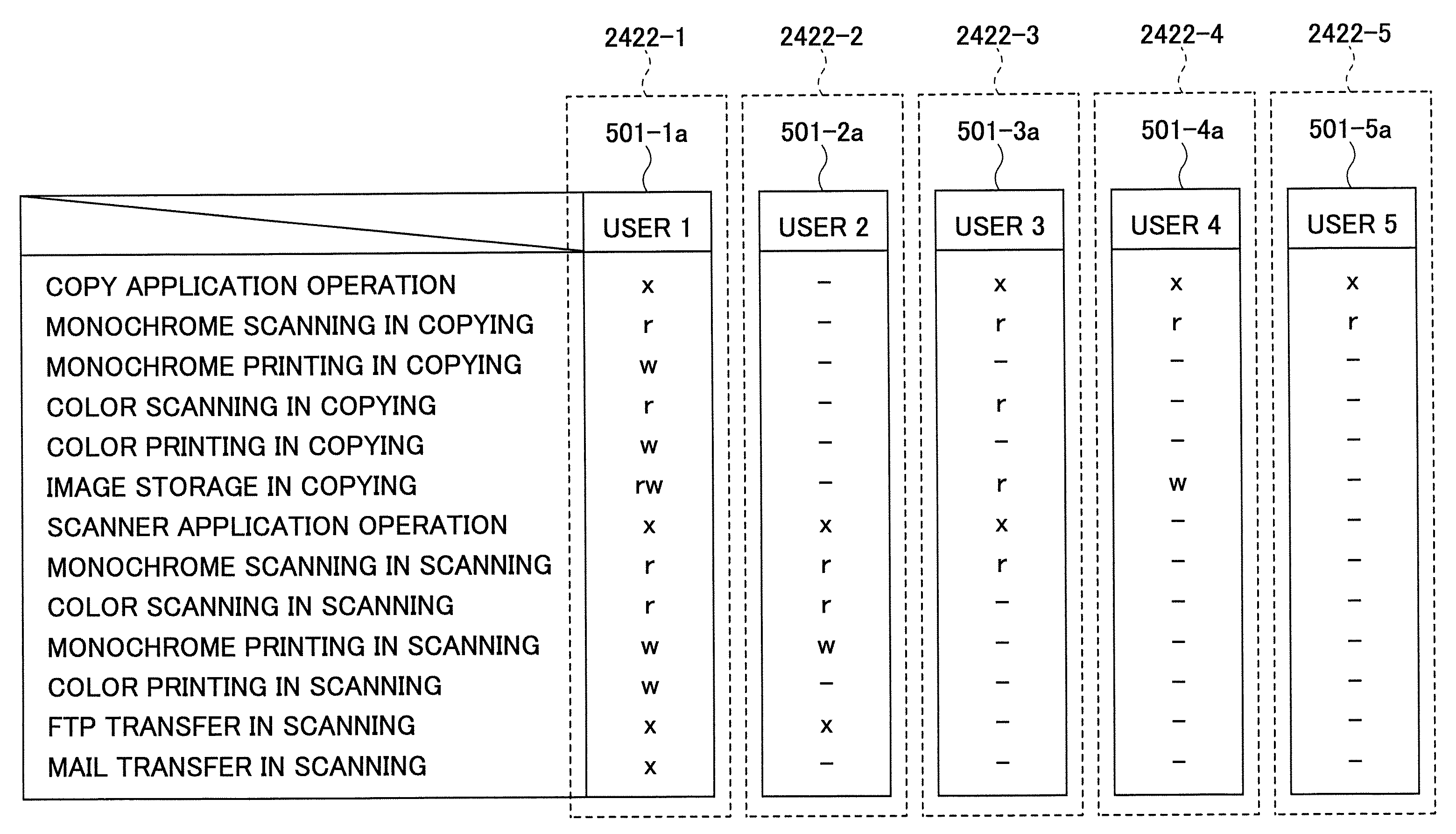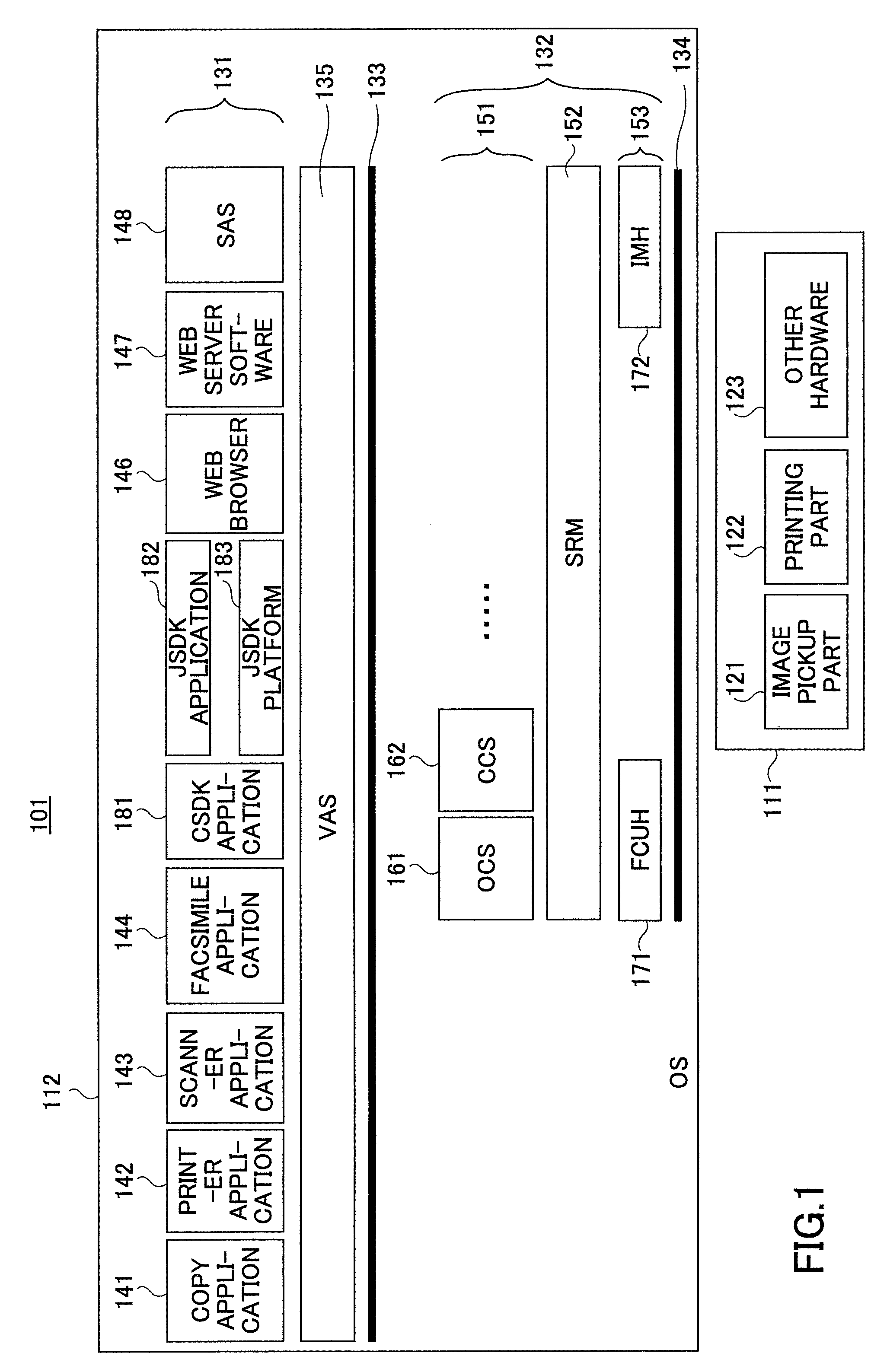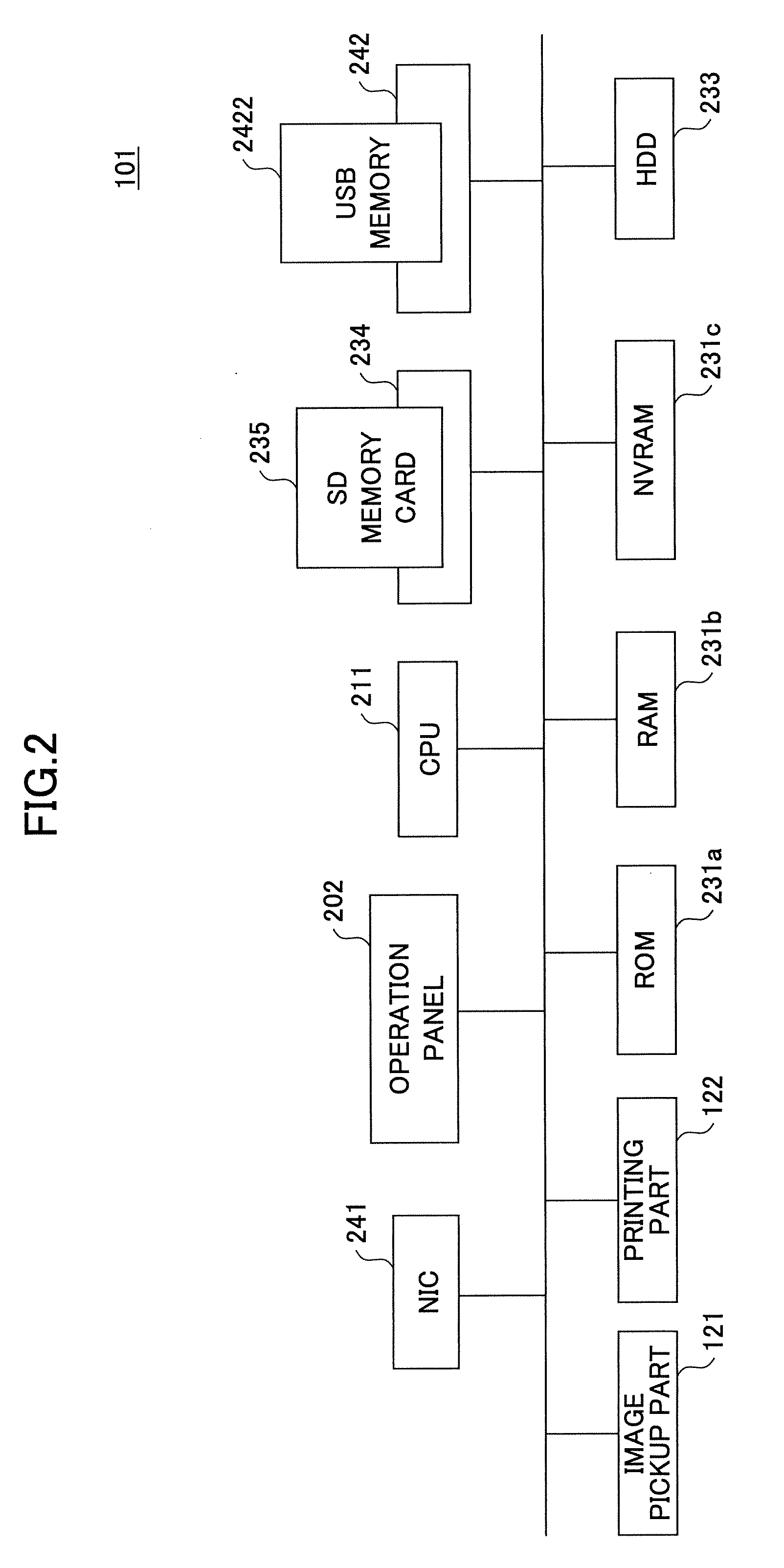Image forming apparatus, access control method, access control program and computer readable information recording medium
- Summary
- Abstract
- Description
- Claims
- Application Information
AI Technical Summary
Benefits of technology
Problems solved by technology
Method used
Image
Examples
first embodiment
[0048]FIG. 4 shows a static arrangement of software used in a multi-function peripheral in the present invention.
[0049]FIG. 4 shows the arrangement example in a static state, i.e., a state in which execution is actually not made yet, of typical software in a hardware configuration, extracted from the hardware configuration shown in FIG. 2, relevant to description below,
[0050] As shown in FIG. 4, in the first embodiment, the OS, various control services (CS) 151 (OCS 161, CCS 162 and so forth) and the standard applications 140 are stored in the ROM 231a. The SDK applications 180 are stored in a SD memory card 235. The policy data 501a is stored in a USB memory 2422, which is one example of a portable information recording medium.
[0051] The standard applications 140 mean applications other than the SDK applications, from among the applications 131, and include the copy application 141, the printer application 142, the scanner application 143, the facsimile application 144, the netwo...
second embodiment
[0087] As described above, in the multi-function peripheral 101 in the second embodiment, the SDK application 180 stored in the USB memory 2422 can be executed. Accordingly, by previously distributing the USB memories to the respective users, storing the respective corresponding policy data 501a, and the SDK applications the respective users allowed to use, it is possible to effectively avoid illicit execution of the SDK applications by spoof. That is, although a bad faith person steels the authentication information such as a password, this person cannot actually load the SDK application 180 unless obtaining the USB memory 2424 in which the SDK application 180 is stored.
[0088] It is noted that, when the USB memory 2422 is distributed to each user or each user group, only the SDK applications 180 for which the user or the user group is allowed to use should preferably be stored in the USB memory 2422, for the purpose to effectively prevent a user having no usage right from illicitly...
third embodiment
[0094] Next, a processing procedure of the multi-function peripheral 101 when the standard application 140 is used will be described. FIG. 13 shows a flow chart illustrating a processing procedure for when the standard application 140 is used for a case where the USB memory 2422 is not inserted at a time of the starting up, in the That is, FIG. 13 shows the processing procedure executed after the multi-function peripheral 101 has entered in the standby state in Step S312 of FIG. 12, for actual utilization of the standard application 140. It is noted that, in FIG. 13, the same step numbers are given to steps identical to those of FIG. 7, and the duplicate description is omitted.
[0095] In FIG. 13, Step S357-1 and Step S357-2 are newly inserted between Steps S157 and S158.
[0096] That is, in Step S357-1, the usbhd 2424 loads, from the USB memory 242, the standard application 140 operable by the current user, determined in Step S157, and starts up the thus-loaded standard application 1...
PUM
 Login to View More
Login to View More Abstract
Description
Claims
Application Information
 Login to View More
Login to View More - R&D
- Intellectual Property
- Life Sciences
- Materials
- Tech Scout
- Unparalleled Data Quality
- Higher Quality Content
- 60% Fewer Hallucinations
Browse by: Latest US Patents, China's latest patents, Technical Efficacy Thesaurus, Application Domain, Technology Topic, Popular Technical Reports.
© 2025 PatSnap. All rights reserved.Legal|Privacy policy|Modern Slavery Act Transparency Statement|Sitemap|About US| Contact US: help@patsnap.com



